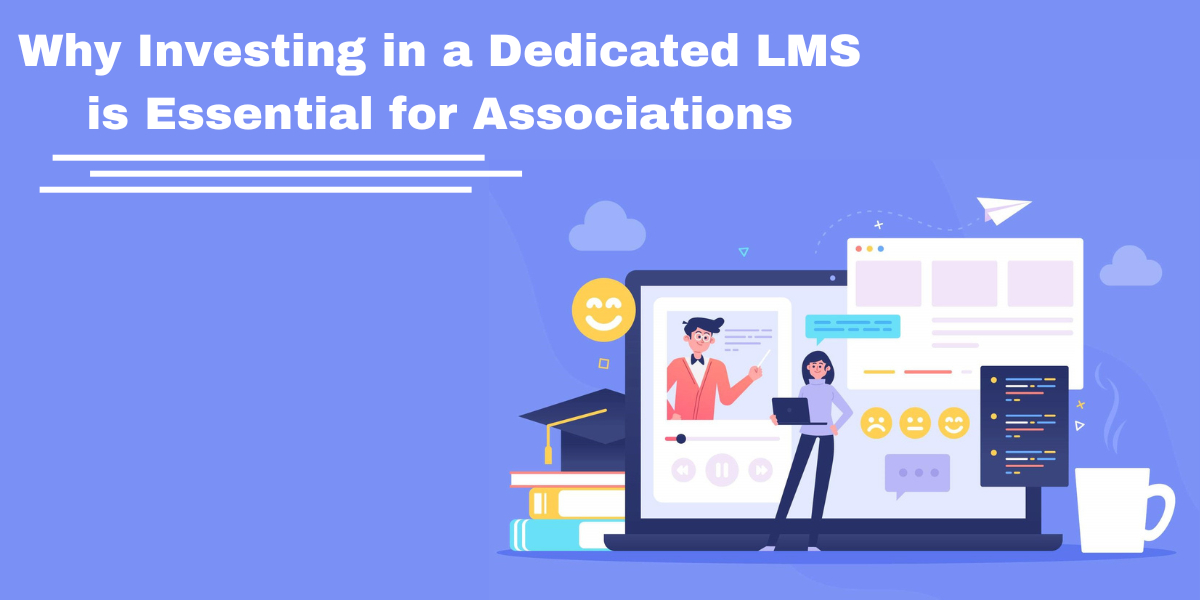Associations Need A Specialized LMS
In 1953, the American Society of Association Executives (ASAE) reported that membership dues made up a significant 96% of an association's income. However, by 2016, this revenue source had drastically decreased to only 45% for trade associations and 30% for professional associations. This decline illustrates the increasing need for alternative revenue sources, especially through continuing education and training programs. A 2017 poll by Association Adviser revealed that learning programs now account for nearly 25% of non-dues revenue for associations. As this trend grows, associations are faced with a vital question: how can they expand educational opportunities, reach more people, and boost revenue for growth? The solution is a modern Learning Management System (LMS) tailored specifically for associations. Here are four critical reasons why investing in a specialized LMS is essential.
Key Reasons to Invest in a Dedicated LMS
1. Diversified Revenue Opportunities
With lifelong learning gaining importance, associations are uniquely positioned to meet the demand for professional development. A 2015 Pew Research study found that 63% of American adults engage in professional growth, and 74% are committed to ongoing learning. Associations can tap into this demand by offering a variety of educational formats, including online courses, webinars, and virtual events. A dedicated LMS makes it easier to deliver and manage these programs, allowing associations to provide a well-rounded learning experience. By leveraging an LMS, associations can increase program offerings, attract more participants, and unlock new revenue streams.
2. Membership Growth and Retention
Education is a core benefit that draws in new members and keeps current ones engaged. A specialized LMS can support personalized marketing efforts, enabling associations to enhance member engagement. By providing customized learning experiences, associations increase member satisfaction and loyalty. Additionally, an LMS allows associations to reach wider audiences through on-demand, multi-language resources, expanding beyond geographical limits. This approach not only improves member engagement but also attracts new members from diverse regions, fostering sustainable growth.
3. Lower Operational Expenses
The growth of online learning has reduced costs associated with delivering educational content. An LMS allows associations to create course content once and share it across multiple channels, lowering production and administrative expenses. With an LMS, associations can also eliminate the need for expensive in-person events, cutting down travel and venue costs. Members can access learning programs anytime, anywhere, and on any device. The savings generated can be reinvested into new training programs, enhancing the association's value to its members.
4. Efficient Certification and Credentialing
Managing professional certifications and credentials can be challenging, particularly when state regulations vary. A specialized LMS provides a central platform for members to track educational progress, manage credentials, and access essential information. For associations that offer certification and accreditation, an LMS automates many administrative tasks, reducing the workload on the Learning and Development team. This streamlined process not only boosts efficiency but also improves the member experience, underscoring the association’s role in professional development.
Strategic Planning Before LMS Adoption
Before selecting an LMS, it's essential to adopt a strategic approach:
1. Define Your Learning Objectives: Ensure that the LMS supports your association's mission and objectives.
2. Integrate Seamlessly: Choose an LMS that integrates smoothly with your existing systems, such as association management and content creation tools.
3. Evaluate ROI: Consider both tangible and intangible returns, including member engagement and reduced administrative costs.
4. Prepare for Change Management: Plan to address resistance to new technology with clear communication and training for a successful rollout.
Enhancing Member Engagement
Beyond providing educational resources, a customized LMS promotes deeper member involvement. By offering personalized learning paths, interactive elements, and social learning features, an LMS creates a more engaging experience, encouraging members to stay active, participate frequently, and gain more value from their membership.
Conclusion
Investing in a specialized LMS is a strategic move that significantly improves an association's capacity to offer top-quality online learning programs. Through an LMS, associations can explore new revenue streams, foster sustainable membership growth, reduce operational costs, and simplify certification processes. In a time where continuing education is increasingly valued, a dedicated LMS is more than just a tool—it’s vital to the future success of all membership-based organizations.




